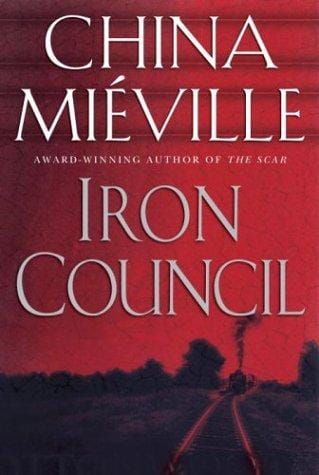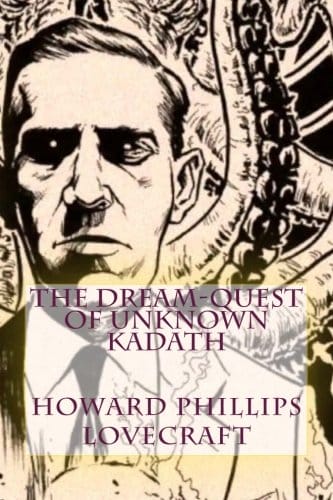Iron Council: A Revolutionary Journey Through China Miéville’s Bas-Lag
A deep dive into China Miéville’s Iron Council—plot, themes and why this steampunk fantasy remains a revolutionary landmark in modern speculative fiction.

Introduction to Iron Council
Published in 2004, Iron Council is the third novel set in China Miéville’s acclaimed Bas-Lag universe, following Perdido Street Station and The Scar. While those earlier books dazzled readers with baroque world-building, Iron Council turns the spotlight on politics, labor struggle, and the power of collective action. Fusing steampunk aesthetics with weird fiction, Miéville crafts a story that is as intellectually provocative as it is visually arresting. Whether you are a seasoned fantasy reader or a newcomer seeking fresh territory, Iron Council offers an unforgettable ride on a runaway train of revolution.
Plot Synopsis
The Beginning
The novel toggles between two timelines. In the present, New Crobuzon—Bas-Lag’s sprawling city-state—is locked in a costly war against the distant Tesh. Citizens chafe under martial law as the ruthless Militia polices dissent. Meanwhile, we follow a band of dissidents, including Judah Low, Cutter, and Ori, as they leave the city in search of the fabled Iron Council—a mobile commune that has become a symbol of defiance.
The Journey of the Perpetual Train
Flashbacks reveal how Iron Council came to be. Decades earlier, railway workers, remade laborers, and freed slaves seized a half-built Transcontinental Railroad engine during a violent strike. Guided by Judah’s golemancy, they laid new track on the fly, forever rolling away from state control. As the train barreled into myth, it left behind a living legend of possibility. The present-day narrative hurtles toward a collision course between this liberated micro-society and New Crobuzon’s tightening grip.
Key Characters
Judah Low, a golem-maker inspired by Jewish folklore, embodies the tension between mysticism and material struggle. Cutter, Judah’s lover, offers a ground-level view of devotion and disillusionment. Ori lives inside New Crobuzon’s underbelly, drifting toward radicalization as he joins the secretive guerrilla cell called the Toro. Taoist-tinged railway worker Ann-Hari, belligerent anti-heroic Remade, and gender-fluid characters like Uther Doul add further texture, underscoring Miéville’s commitment to inclusive, subversive casting.
Major Themes
Revolution and Resistance
Iron Council asks hard questions about whether revolution can succeed or whether it is doomed to be co-opted or crushed. Miéville refuses neat resolutions: the Iron Council itself is frozen in time at a pivotal moment, neither defeated nor victorious, awaiting a future that may never come. This suspension captures the bittersweet paradox of sustained struggle—an eternal "not yet" that both fuels and frustrates activists.
Queer Representation and Identity
Beyond politics, the novel foregrounds queer love and non-binary identities without reducing them to allegory. Cutter’s desire for Judah is messy and authentic, reflecting how intimacy intersects with ideology. By embedding LGBTQ+ experience organically into the story, Miéville expands the expressive range of epic fantasy, proving the genre can chronicle radical social realities as deftly as dragons and airships.
World-Building and Genre Fusion
Bas-Lag is one of modern fantasy’s most celebrated settings, and Iron Council enriches it further. Victorian-esque steam engines rumble beside bio-engineered constructs; thaumaturges craft dirigibles while golems stride through deserts. Miéville spices this fusion with linguistic inventiveness—coinages like "cactacae" and "gryphons" nestle beside Dickensian slang—making every page feel thick with texture. The book balances fantasy’s sense of wonder with science-fictional extrapolation and Marxist theory, earning its reputation for boundary-breaking "New Weird" fiction.
Literary Significance
Iron Council won the Arthur C. Clarke Award and the Locus Award for Best Fantasy Novel, cementing Miéville’s status as a major voice in speculative literature. Critics praised its bold engagement with class warfare and imperialism, noting how it revives the political urgency once common in early science fiction. The novel’s experimental structure—braiding timelines, reportage, and prose poetry—invites comparison to modernist works while staying compulsively readable. For scholars, it serves as a case study in how genre can interrogate real-world power structures.
Why Iron Council Still Matters Today
Two decades on, Iron Council feels eerily prescient. Issues like labor exploitation, privatized infrastructure, and state surveillance dominate current headlines. Grassroots uprisings from the Arab Spring to the Fight for $15 echo the novel’s refrain that ordinary people can reshape history, even when victory is uncertain. Furthermore, its multicultural, queer-inclusive cast anticipates contemporary calls for wider representation in fantasy publishing. Reading Iron Council now is less escapism than a mirror held to our precarious moment.
Where to Start Your Bas-Lag Journey
You can jump into Iron Council without prior knowledge, but newcomers may prefer to begin with Perdido Street Station to savor New Crobuzon’s first appearance. The Scar, set largely at sea, offers a nautical detour before Iron Council brings the trilogy’s social tensions to a head. Whichever path you choose, expect dense prose, jaw-dropping monsters, and political bite. Finish Iron Council and you will likely find yourself rereading passages, hunting for thematic threads, and scouring fan wikis—proof of fiction that lingers long after the last page.
